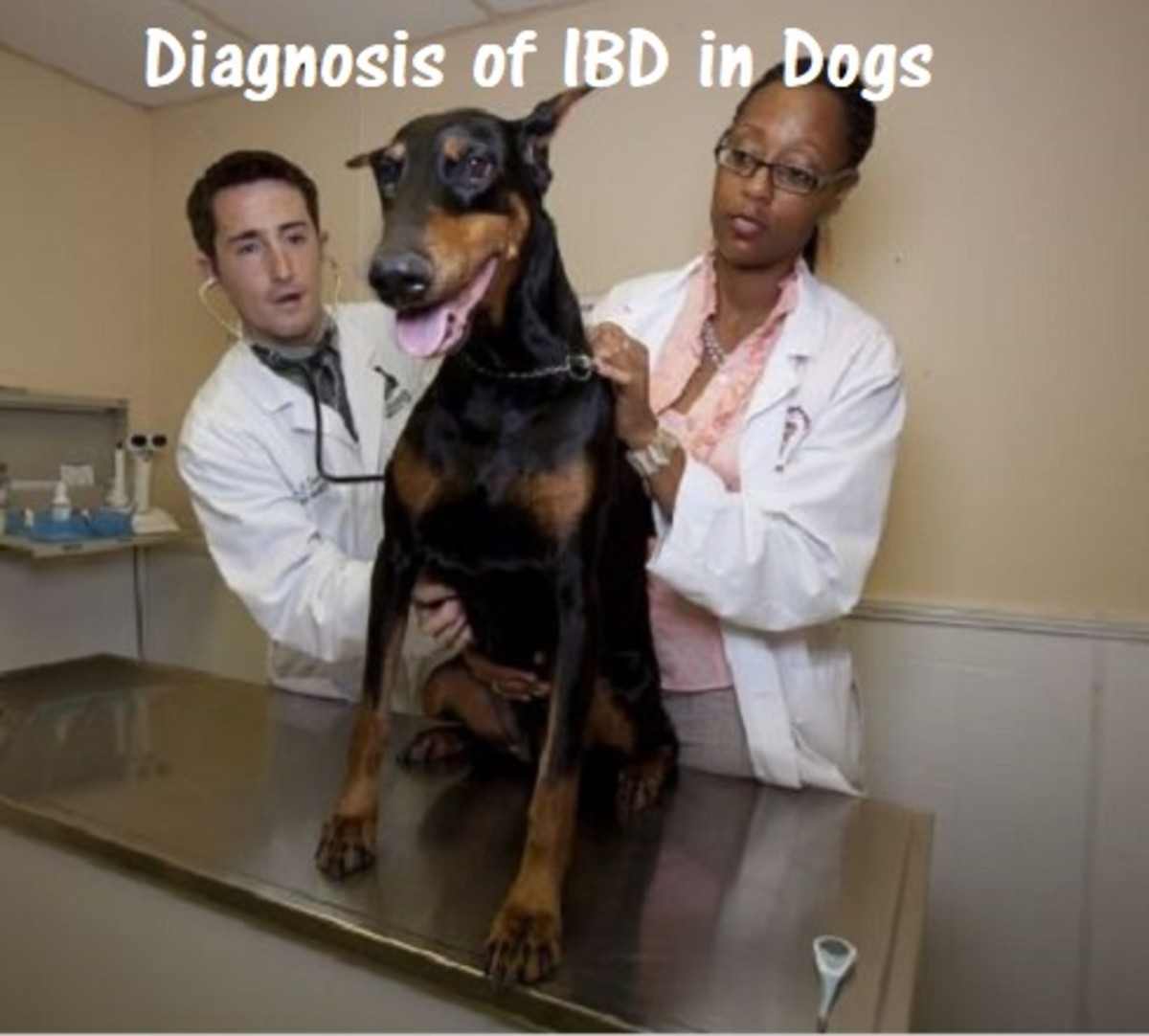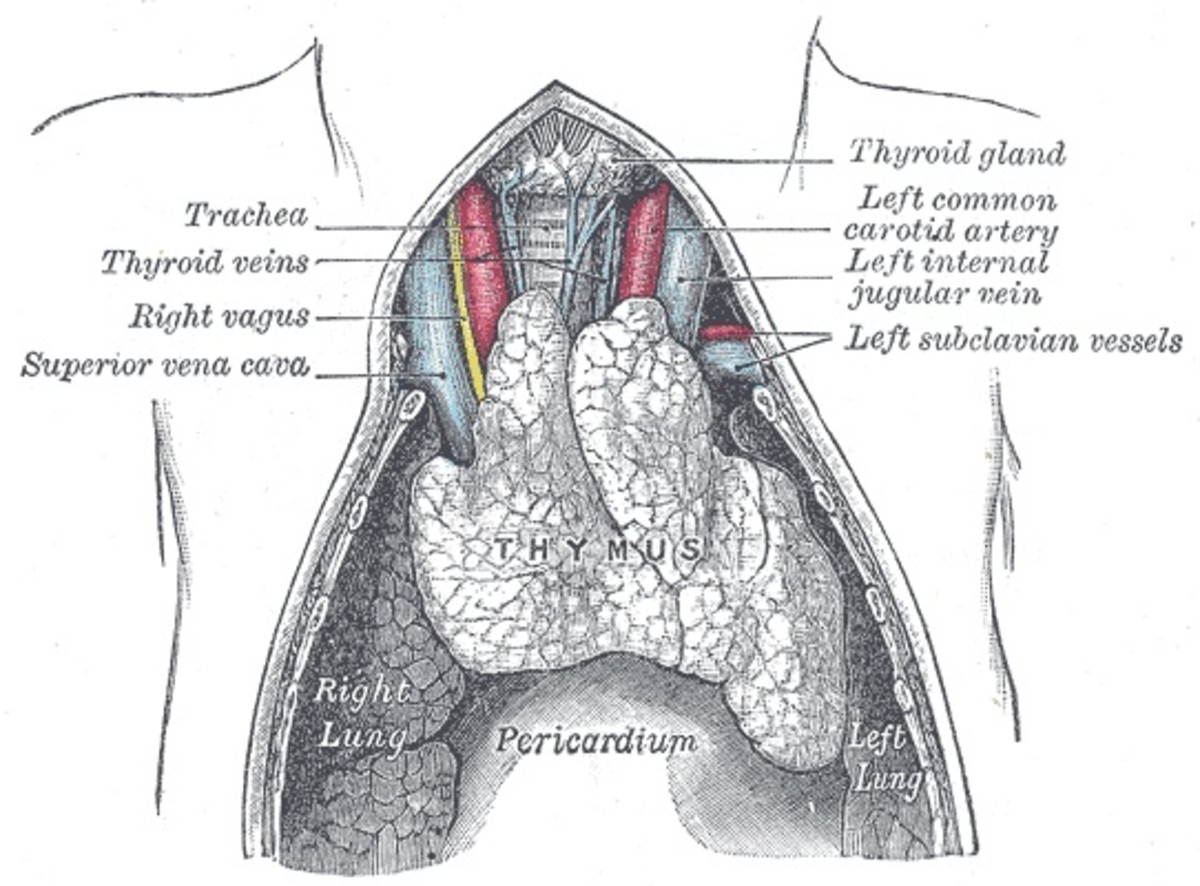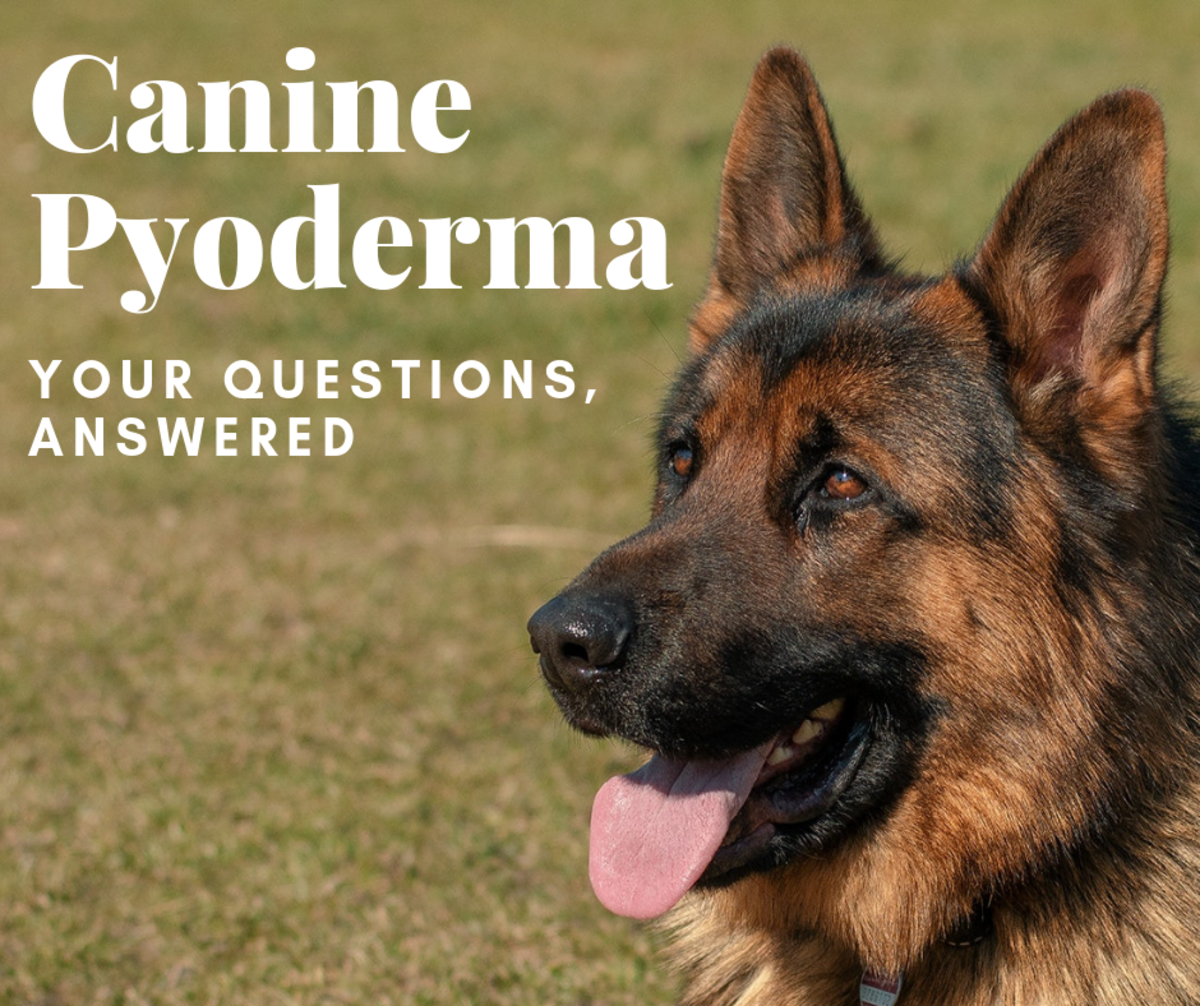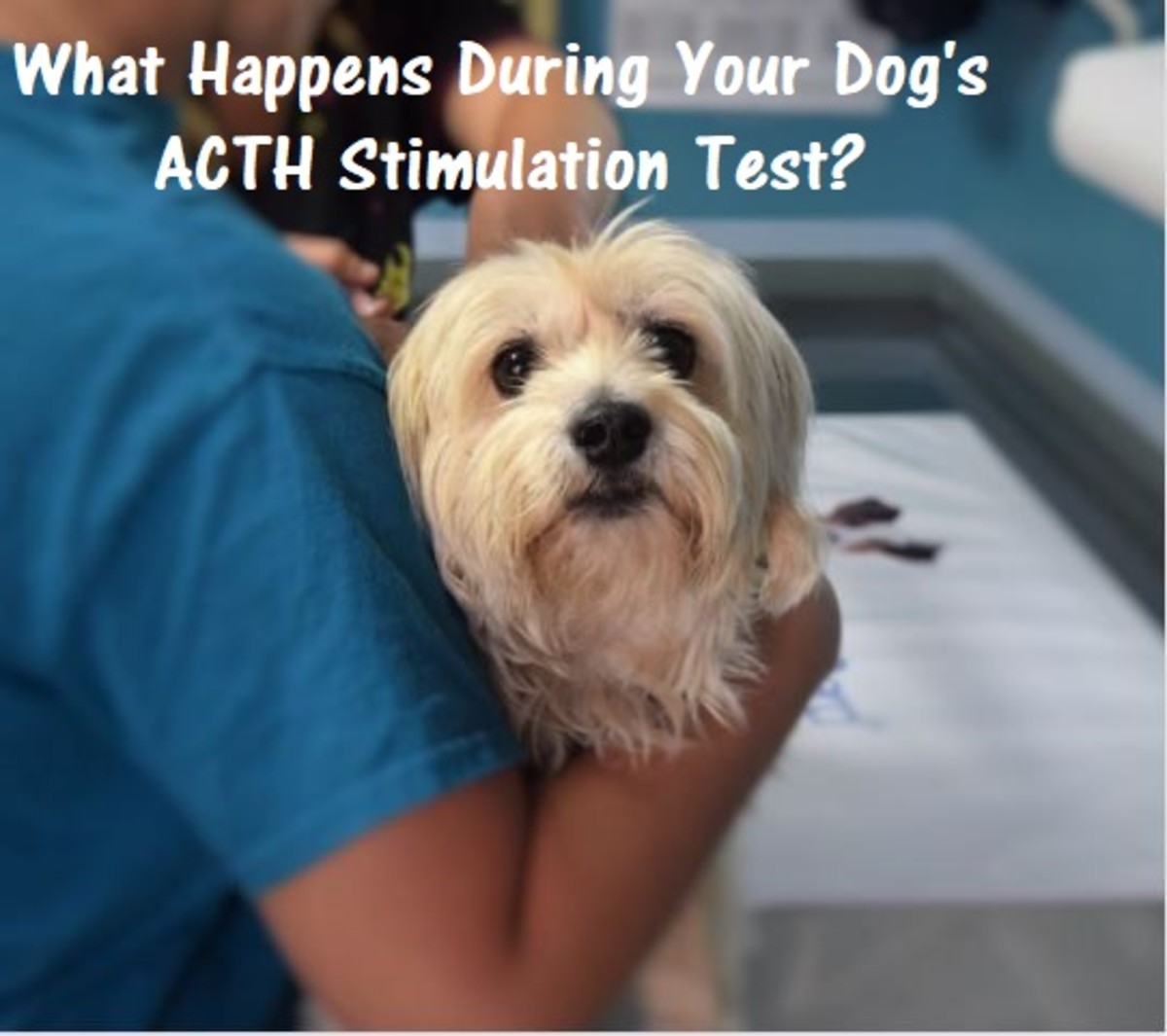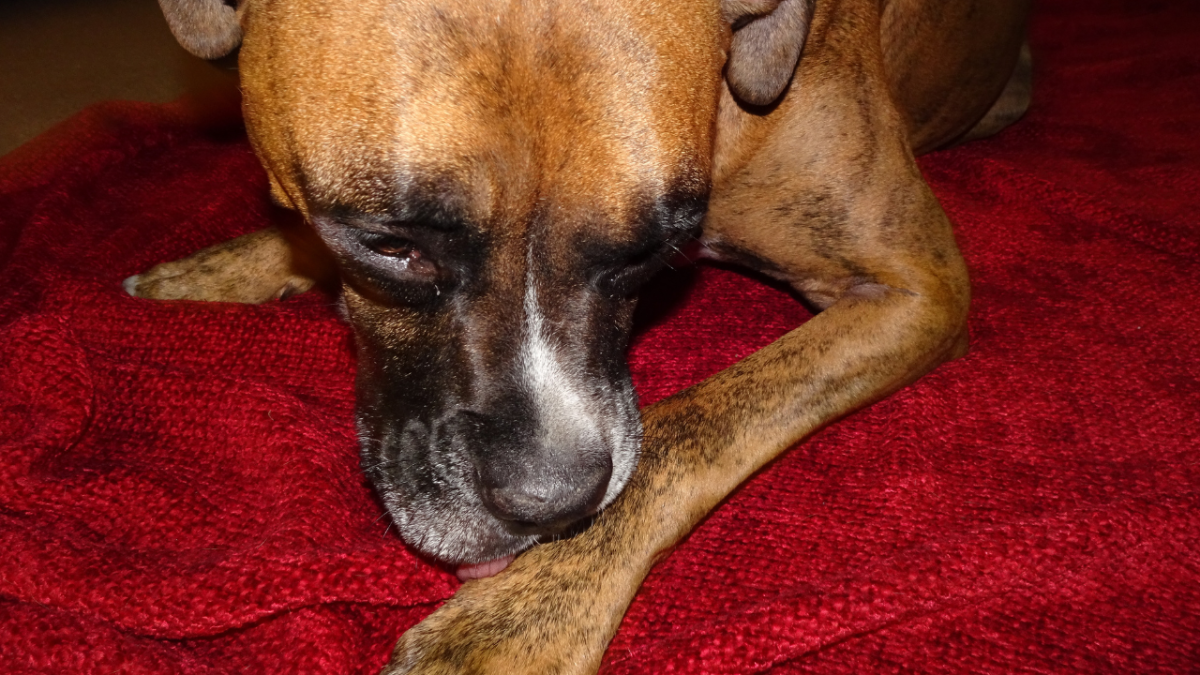Living with Canine IBD: A personal journey
Raphael
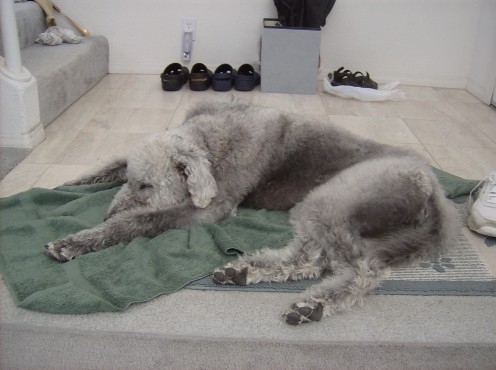
Inflammatory Bowel Disease
Living With Canine IBD: A Personal Journey
by
Maria V. Eyles
Disclaimer: I am not a veterinarian or even a vet tech. Nothing in this article is meant to be or substitute for medical advice.
We’re the only two in this park. I’m walking Raphael on the grassy field off Ash Street when I decide to let him off the leash. Suddenly, a man pulls up to the far curb of the park (two blocks distant). Out bounces his yellow lab from the car, eyes on the ball his master carries. Raphael looks at me. “No Raffy!” I yell—but my dog takes off, a missile of mischief, toward man and lab.
Normally incapable of running, I start to run. The man’s lab retrieves the tennis ball so the man reaches into his pocket for a treat. Seeing Raffy flying at him like a furry blue kangaroo, the man takes out another treat and holds it out toward Raffy, who still has another half block to go.
Huffing and puffing with all my might, I shriek to the man, “Please no! Don’t give him a treat!!! No, no, no!” I wave my hands crossing in front of me and almost trip.
The man is certain I’m an escaping psychotic. I arrive within fifteen feet, bent over and gasping for breath, I try to act normal even though levitating with anxiety. The man eyes me appraisingly; he frowns. Big contrast to the way he looks at my adorable dog.
“What are you so upset about?” the guy says. “I was just going to give him a little treat...I didn’t do it YET,” he says, holding the jerky very close to Raphael’s lips. To me, it might have well as been a semi-automatic weapon he was pointing at Raphael’s mouth.
“Oh no, no, no, please no. I’m sorry, sir; I don’t mean to be rude, but don’t let him have it! He has, he has...!”
“Why not? All dogs love jerky. Just a little...”
“...deadly allergies. No, Raffy, no!”
“But this is purely natural!” he insists, holding up the bullet of beef for me to discern its purity in the sunlight. “It’s really okay, lady.”
“No-eat, no-lick, no-drink!” I direct our mantra to my dog’s innocent eyes as I grab his collar with seconds to spare. I hug Raphael protectively, who squirms away.
“Hey lady. Now I see. You’re trying to make this dog neurotic, aren’t you?”
Neurotic like you, he meant.
“No, no, I—” I finally stand up straight and speak without pleading. “Actually, sir, what I’m really trying to do is save his life! He has a very severe disease. That thing there could kill him.”
“You don’t even know what this is!”
“It doesn’t matter. He can’t have it.” I cross my arms.
“You know, lady,” he proclaims, a jury foreman issuing a verdict, “I think people like you shouldn’t own dogs! You don’t know what you’re talking about. What you’re doing to him is cruel.”
Neurotic? Cruel? I don’t think so. But how was the man to know?
For Raphael is two entirely different dogs: On the one hand (or paw), he is the stunning Shepadoodle weighing in at just below 80 pounds, prancing, playful, exuberant yet mannerly, friendly, curious—and of course ever-hungry. This is the Raphael most people see, including the man in the park.
On the other paw, Raphael is a listless phantom of himself when plagued with an IBD crisis or flair-up. He then drops weight (barely 59 pounds). He becomes listless, disinterested in play, water, food or walks. Nausea plagues him day and night, as will constant, debilitating pain. Energy-less, he can barely stand for more than a few minutes. Huddled in dark corners, he refuses to interact. He is woozy from the pharmacopeia of pills he gets per day. Mealtimes are hellish for us: I must make broth out of his prescription food and inject it down his throat. He can eat very little, and very often I cry as I sing softly to him, and administer another pain pill with a prayer for a little sleep for us both.
This second Raphael is a version only I and his vets see, The Raphael with Inflammatory Bowel Disease.
Inflammatory Bowel Disease, or IBD, is an inflammatory immune system disease. IBD is in the category of serious chronic diseases like lupus, multiple sclerosis and Crohns Disease. It not only strikes dogs, but cats and human beings, too.
Relatively few people have heard of IBD, as diseases go. So, often their impression is that IBD is not serious, just a passing tummy-ache that some easy home remedies can cure. No. IBD is chronic and very serious. IBD is not a “nervous” disorder. Many people think that IBD is the same as IBS or Irritable Bowel Syndrome, but the conditions are vastly different. Easily explained, IBS is annoying and irritating but not life-threatening, while IBD can kill a creature if not treated.
Let’s look at how IBD operates within Raphael to see why I went into raving hysterics about one tidbit of food.
A misfiring of the immune system defenses is how most immune-mediated diseases work and IBD is no exception. The tiniest bit of the “wrong” food can trigger a flair-up.
Here’s a familiar picture: When you and I eat, as the food enters our mouths, enzymes in the saliva start the digestion process that ends in the intestines. In the stomach, digestive juices enter to break down the food and convert it so that the nutrients in the food can be extracted. Other organs such as the liver and pancreas join in on the conversion process, and liquids and solids are eventually separated. Health and ease of digestion are the happy results. The immune system generally doesn’t usually kick in the picture unless allergies come into play.
Quite a different picture when IBD operates: When Raphael eats, his immune system perceives food as an infection or as “the enemy.” So instead of producing the digestive enzymes and juices, his immune system kicks into high gear and unleashes floods of infection-fighting white blood cells into his digestive tract. One job of these white blood cells (technically called lymphocytes) is to attack and kill off the misperceived “infection”—his food. This inflames his digestive tract, so Raffy regurgitates the food and bile.
The white cells do not stop at the food; they go on to attack the lining of his digestive track, which cab become so inflamed it becomes ulcerated and bleeds.
With most allergies, if you remove the offending food from the diet, digestion can proceed normally. In the case of IBD, however, this is how the digestive tract operates “normally.”
Moreover, we are dealing with a disease wherein the body is fighting itself at the cellular level. That can mean, in moderate to severe cases like Raphael’s, that a few cells of that beef jerky—never mind a chunk of it—could precipitate internal bleeding and a flair-up. This is what made me run and act like a maniac: I was desperate to head off a flair-up which could eventually lead to a crisis. Even if Raphael had spit out the beef jerky—and he likely would have—the beef cells would already be in his mouth on their way to the stomach and intestines. The damage might have been done, invisibly. This is IBD, a disease in camouflage.
At this writing, IBD has no one cause or cure, but take heart: IBD can be treated and managed very well in most cases.
Diagnosing and managing IBD takes detective work, some scary experimentation, dedication, investment in testing, a great vet, patience, much vigilance and sometimes sheer luck. And I daresay lack of squeamishness, which develops along the way, is a useful factor too!
Segueing right into lack of squeamishness, the symptoms of IBD are also in camouflage. The two main symptoms are either frequent vomiting or frequent diarrhea. Big help, huh? These two things occur with so many diseases, you don’t have a clue at first. Here are many of the symptoms, starting with the main two, which can occur together or on their own:
Vomiting with bile (it’s yellowy goo)
Diarrhea and/or fecal leakage
Nausea/lack of appetite
Weight loss
Stool with shiny mucous, blood or both
Lethargy/ lack of stamina
Audible gas and tummy rumblings
Stomach pain/bloating
Agitation and depression
Dehydration, more an effect than a symptom, can easily occur, leading to electrolyte imbalance.
Some of these symptoms are hard to read, as our pets instinctively do not wish us to perceive illness or weakness in them. It’s the more subtle signs that’ll mystify you at first. In Raphael, nausea shows up as frequent smacking of lips, significant drooling (he does not normally drool), turning his head away at the smell of food, restlessness, hanging his head down over the sofa or stair, inability to sleep soundly. And, of course, eventually vomiting, but you can figure that one out yourself.
How can you tell if your dog is in pain? Well, if he or she isn’t whining or walking in circles around your legs, you have to do some detective work. First, palpate his or her tummy gently and see if the dog arches up or away from you. If so, that is painful. A yelp will clinch the deal. Panting or rapid heartbeat while at rest can also indicate stomach pain. Slow heart rates can also be a symptom. Therefore, it is wise to take the baseline vitals for your dog, so you know when they are abnormal.
Often when in pain, Raphael’s tummy pulls in and out rapidly as if spasming and he pants. Again, this is at rest, not after exertion. A subtler symptom of pain eludes many owners. But I can merely look at how Raphael is standing and often assess pain levels. When in pain, he will stand with one hip arched up and that leg awkwardly turned outward. All this takes practice to see. Yet paying attention to the dog’s current state can help to avert a flair-up or serious crisis down the road.
Dehydration is easier to determine on a dog with a pink mouth. You can press the gums and see whether color returns or the gums remain pale—pale gums being a sign of dehydration. Unfortunately, Raphael has black lips, mouth and gums, so I have learned to tell dehydration by watching his energy fizzle like a draining battery. An infusion of electrolytes via water bowl or I.V. works wonders.
Mini-seizures are another way to tell that one of the symptoms is getting bad and you have missed it. In Raphael they are more like “absence” seizures where he grows stiff and stares off in the distance, not responding to his name. These mini-seizures alert me for a vet visit unless I can figure out the cause of the distress and alleviate it.
Unfortunately, diagnosing IBD by symptoms, which are only clues, counts merely as detective work. The only definitive way to get a diagnosis of IBD is via endoscopy and/or colonoscopy. As you may guess, this diagnosis is quite expensive as well as risky for the animal, which has to be anesthetized. Yes, you can forget your cruise to the Caribbean if you have a dog with IBD. In fact, you can forget a lot of things. (Like acting normally in a park.)
If IBD is diagnosed, I strongly suggest that you find yourself a veterinary internist. Treatment is often a matter of a delicate combination of factors, and the internist has more tools and knowledge in her medical bag. A regular vet, no matter how brilliant or well-meaning, may find him or herself at wit’s end trying to treat this illness, especially when a flair-up looms. It is best to have specialist who knows your dog before a big crisis (the dog stops eating), even if you have to travel a bit.
Treatments for IBD aim have dual goals. Calming the digestive tract by finding a food that is tolerated is critical. By tolerated we mean the food is not perceived as an infection or as the enemy, but as a good thing. A second goal of treatment is calming the immune system via various medications such as antibiotics and/or steroids.
Dietary changes and/or restrictions are usually first line of treatment. If you and your dog are lucky, he or she will have a milder form of IBD which can be managed by diet change alone.
Again, because Raphael’s IBD is moderate to severe, he lives on hypoallergenic prescription food only. This food is hydrolyzed, or broken down into such tiny basic cells with water so that the stomach does not even recognize it as food. So now the food is cleverly camouflaged and the immune system is fooled into thinking that this food is water, which it doesn’t attack. The canned hydrolyzed food, costing around $3.50 per can, looks like liver pate gelatin. (Yum.) Royal Canin makes palatable dry food (also hydrolyzed) which seems to cost about .59 cents per kibble. Though I exaggerate, it is very expensive, but worth it to see Raphael happily downing his food and having it stay down.
Once a proper diet is found—and it will vary from case to case—you need to have the determination and willpower for two to stick to it. You must not add one iota of anything else to the diet or playtime treats (like rawhide chews) for any reason. Not because you feel sorry or because Fido “deserves a treat,” or “All dogs can have a bit of chicken.”
Not your IBD dog—not Raphael. Big no-no. “Aww-just-a-little” can hurt. Remember, we are dealing with food at the cellular level! One cell of bacon can call down the white blood cells, and you might see your dog fighting for his/her life to the tune of thousands of dollars. In Raphael’s case, even a few grains of boiled white rice is not tolerated by his body. That makes vigilance extreme and self-discipline difficult. But what is a better sacrifice than for the health of someone who is dependent on you to know better?
Some people might see this as my being “cruel” but only because they have never seen the second Raphael in the throes of a flair-up. They may see me as being neurotic. That’s their opinion. I suppose I am a bit of a fanatic because I always wash my hands before handling Raffy’s food or allowing him to lick me. If this means I wash my hands a thousand times a day, so be it: he has been in complete remission for well over a year now, and on and off (mainly on) for the last four years. Sure, I’ll be “cruel and neurotic” if the result is my healthy, happy Raphael, the number one version.
Often when the IBD has reached the moderate to severe range, as in Raphael’s case, the immune system must be calmed and suppressed by drugs. Raphael takes low daily doses of Metronidazole (a stomach-oriented antibiotic) and prednisone (a steroid) during remission. Daily he takes Pepcid AC for gas and Metaclopramide for nausea. We always keep pain killers around, and anti-diarrheal medicine, too. During a bad flair-up, these drugs must be increased. Sometimes other heavy-duty meds like Cerenia and cyclosporine join the treatment battle plan which can run into very big bucks. I’m talking such big bucks that the only cruise ship you might ever see is the wind-up toy kind in your bathtub.
In Raphael’s case, IBD has proved to be very costly. But please do not be deterred by this. All cases are different and treatment plans vary greatly. Once a treatment program is successfully instituted, it does not have to cost a fortune. For me, there was no question that I would do everything to give Raphael the best life possible. The result has been financial stress for me, but thankfully some of it is offset by the quality pet insurance I have.
A wise rule is, whenever you think “Dog, cat, or pet” think “Pet Insurance!” in neon. If you use it once a year it should prove a good investment.
Think about it: Veterinarians receive the same (if not more rigorous) training as human doctors and use similar or identical medicines, equipment and lab procedures. But contrast that with how many pet owners have decent pet insurance. The picture is imbalanced, to say the least. So I say that pet insurance is critical nowadays for even the healthiest-looking animal.
IBD will re-orient your world. To navigate that world, self-education is crucial.
The same would hold true for you if you had a serious medical condition, and this is no different. You are your dog’s medical manager. You need to research the disease and keep up with things. It is natural for almost any person, even sometimes doctors or vets, to eventually become blasé about the ups and downs of a chronic illness like IBD. Or maybe they are busy and tired or out of town. There may be routine check-ups, but IBD is not routine. You need to read, study, ask questions. Learn the basics of veterinary nursing by asking them how it’s done. IBD is an illness that you will be treating for the most part.
For example, I mentioned that finding the right drug takes a lot of experimentation. But if, after a good trial period, you still don’t like the way your dog is reacting to a drug—speak up boldly. Keep a diary of reactions. Call in. Ask for all the alternatives. You see things your vet doesn’t see; you know things about your dog your vet doesn’t know. Make a stink! Your dog will thank you for it (and hey, they like stinky things).
You must be able to advocate for your pet. I remember having one vet telling me all about antibiotics for years and years. Change this; try that. (Well, that was the vet’s job, to be fair.) Suddenly I straightened up as a light bulb went off in my head. “Okay, all these antibiotics...but what about probiotics?!” I interrupted. That vet immediately got up and came back with an array of sample canine probiotics. “Oh, I don’t usually bother about this stuff—forgot I even had them—but here’s some to try.”
He shook his head as he told me that they “probably wouldn’t do any good.”
He was dead wrong. Poor Raphael’s system had been flooded with bacteria killers and suppressants. Those probiotics, I believe, helped save his life by giving his own system a natural boost toward normalizing the bacteria and fighting the disease. Today I would never be without probiotics for Raphael. I feel they have turned the whole disease around.
Self-education and advocacy are so important. I wonder why drugs developed in the 1980’s are still being used on dogs and cats with IBD, while research in the field has advanced much further for humans? Who has explored more natural medicines and treatments? What about acupuncture and healing arts like Jin Shin Jyutsu, a kind of acupressure? The latter has worked wonders for Raphael and me in stabilizing his cortisol production. I keep asking, and maybe someday someone will have an answer.
Finally, dedication, patience and vigilance are keys to keeping your IBD dog in remission. These have led to an incredible bond between me and Raphael, emotional, psychic and spiritual. When all is said and done, with the help of many including a great vet, we have tamed the IBD. As a bonus, we have also increased the love. Not a bad outcome, I’d say. And to me, far sweeter than that cruise.
The End
Happy, Healthy Raphael
Click thumbnail to view full-size
Healthy, Happy Raphael



